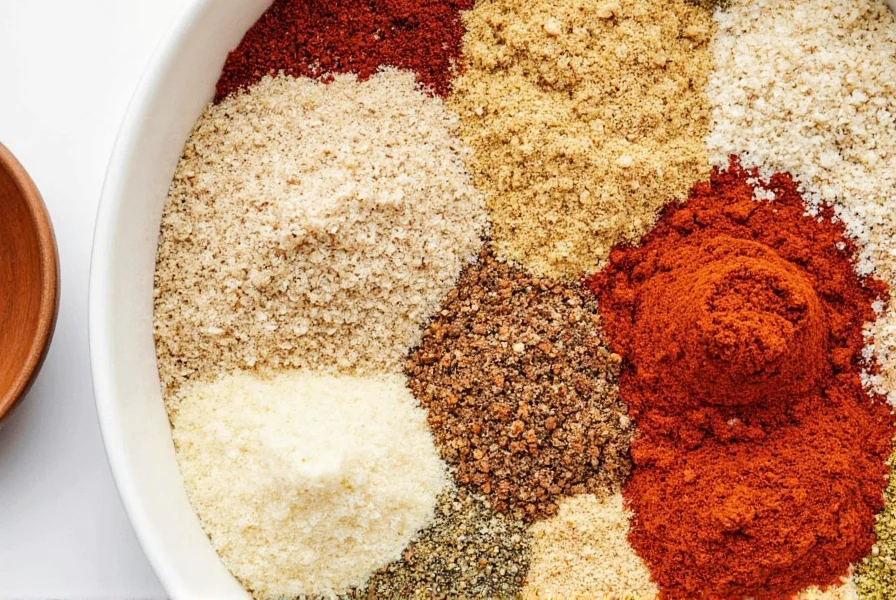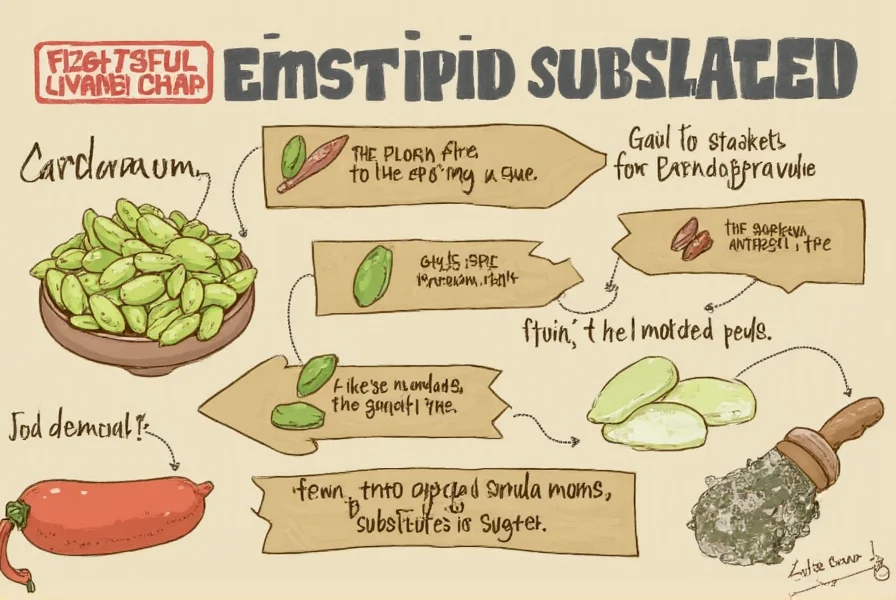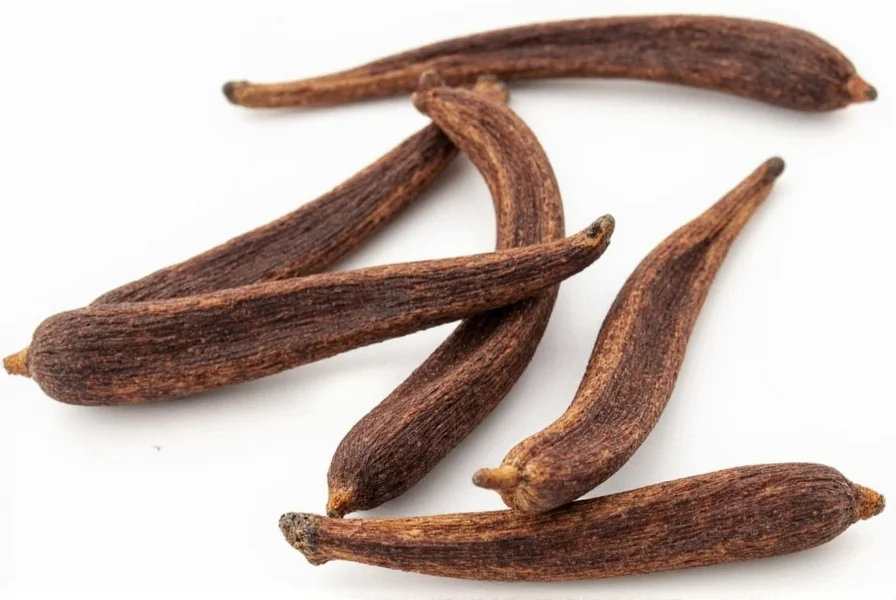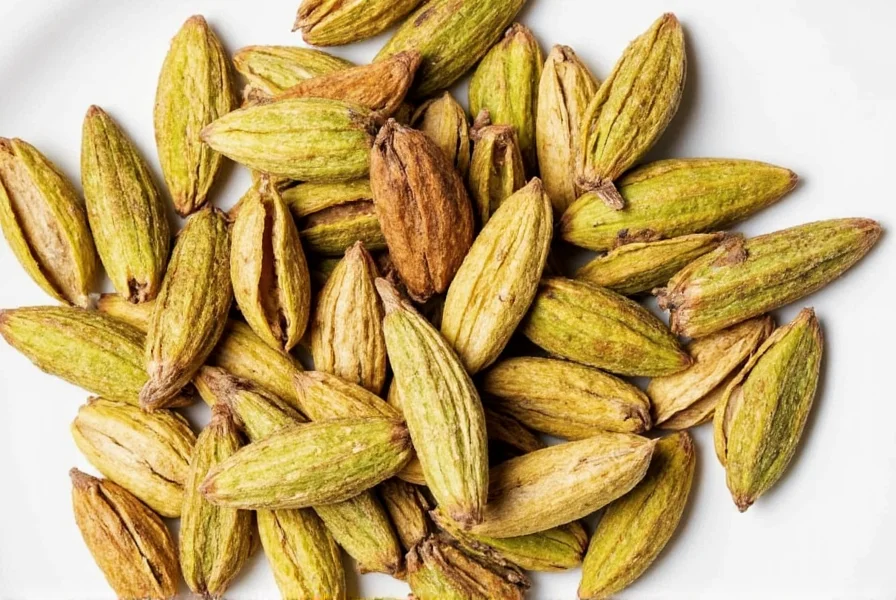Table of Contents
Cardamom Substitutes: Quick Reference for Any Recipe
When you need a cardamom substitute, the right alternative depends on your recipe type. Here are the top 5 substitutes with exact usage ratios for baking, cooking, and beverages. Each option provides a different flavor profile, so choose based on your dish's requirements.
| Substitute | Flavor Profile | Best Used In | Substitution Ratio |
|---|---|---|---|
| Cinnamon | Warm, sweet, aromatic | Desserts, spiced drinks, baked goods | 1:1 (reduce by 25% for stronger dishes) |
| Vanilla Extract | Sweet, creamy, smooth | Baked goods, sauces, custards | 1/2 tsp per cardamom pod |
| Nutmeg | Earthy, warm, slightly sweet | Curries, meat dishes, pumpkin pie | 1/2 tsp per 1 tsp cardamom |
| Ginger | Spicy, zesty, invigorating | Curries, stews, gingerbread | 1:1 (use fresh for stronger flavor) |
| Clove | Sharp, intense, aromatic | Meat dishes, mulled drinks, pickling | 1/4 tsp per 1 tsp cardamom |
Detailed Substitutes for Different Recipes
Cinnamon for Baking and Desserts
Cinnamon is the closest match for cardamom in sweet applications. For cookies, cakes, or spiced lattes, use a 1:1 ratio but reduce by 25% if the recipe has other strong spices. In Scandinavian baking (like Swedish cardamom buns), combine 3/4 tsp cinnamon + 1/8 tsp nutmeg per tsp of cardamom for authentic flavor.

Vanilla Extract for Creamy Dishes
Use vanilla extract when you need sweetness without spice. For custards, puddings, or ice cream, substitute 1/2 tsp vanilla extract per cardamom pod. Add a pinch of nutmeg to enhance complexity in baked goods.
Nutmeg for Savory Dishes
Nutmeg works best in curries, meat rubs, and pumpkin-based dishes. For Indian curries, use 1/2 tsp nutmeg per tsp cardamom. In traditional masala chai, combine nutmeg with cinnamon for balanced warmth.

Ginger for Spicy Applications
Use fresh ginger for curries, stir-fries, or gingerbread. Substitute 1 tsp grated ginger for 1 tsp cardamom. For beverages like chai, add a small piece of fresh ginger root to the steeping liquid.
Clove for Strong Flavor Profiles
Clove is ideal for meat dishes and mulled wines. Use only 1/4 tsp per tsp cardamom to avoid overpowering. In Jamaican jerk seasoning, combine clove with allspice for depth.

Recipe-Specific Substitution Guide
For Indian Chai
Replace 1 tsp cardamom with: 1/2 tsp cinnamon + 1/4 tsp ginger + 1/8 tsp cloves. Toast all spices before grinding for maximum aroma.
For Scandinavian Baking
Replace 1 tsp cardamom with: 3/4 tsp cinnamon + 1/8 tsp nutmeg. Add orange zest for citrus notes missing in cardamom.
For Mexican Hot Chocolate
Replace 1 tsp cardamom with: 1/2 tsp cinnamon + 1/4 tsp allspice. Use dark chocolate for richer flavor.
Practical Tips for Using Cardamom Substitutes
- Toast whole spices before grinding to release oils and enhance flavor
- Start with half the recommended amount and adjust to taste
- Combine spices for complex flavors (e.g., cinnamon + nutmeg for baking)
- Use fresh ingredients - old spices lose potency quickly
- For beverages, steep spices directly in hot liquid for best infusion
Conclusion
No single spice perfectly replicates cardamom's unique flavor, but combining complementary spices creates layered taste profiles that honor the original. The key is matching substitutes to your recipe type: cinnamon for baking, nutmeg for savory dishes, and ginger for spicy applications. Always adjust quantities based on personal taste and spice freshness.
Frequently Asked Questions
What is the closest substitute for cardamom pods in baking?
For baking, combine 3/4 teaspoon cinnamon plus 1/8 teaspoon nutmeg to replace 1 teaspoon of cardamom. This mixture captures cardamom's warmth and complexity while maintaining balance in sweet recipes. Add a pinch of orange zest for citrus notes.
Can I use ground cardamom instead of cardamom pods?
Yes, but use 1/4 teaspoon ground cardamom per pod. Whole pods retain flavor longer - for best results, crush pods to release seeds and grind fresh. Pre-ground cardamom loses potency after 3 months.
How much substitute should I use when replacing cardamom in recipes?
Substitution ratios vary: cinnamon (1:1), vanilla (1/2 tsp per pod), nutmeg (1/2 tsp per tsp cardamom), clove (1/4 tsp per tsp cardamom). Always start with less than you think needed and adjust to taste. Stronger spices like clove require extra caution.
What's the difference between green and black cardamom substitutes?
Green cardamom (sweet/citrusy) substitutes: cinnamon + nutmeg for baking. Black cardamom (smoky) substitutes: 1/2 tsp smoked paprika + 1/4 tsp cloves for savory dishes. Never substitute black cardamom in sweet recipes.
Can I combine multiple substitutes to better mimic cardamom flavor?
Absolutely. For complex dishes, try: 1/2 tsp cinnamon + 1/8 tsp nutmeg + 1/16 tsp cloves. For beverages, add 1/4 tsp allspice. The key is balancing flavors - start with small amounts and taste as you go.
Are there any non-spice alternatives for cardamom in beverages?
Yes. For coffee or tea, use 1/4 tsp orange zest + 1/8 tsp cinnamon. For chai, add 1 star anise + 1/4 tsp fennel seeds. These provide similar licorice-like notes without traditional spices.
Can I skip cardamom entirely in a recipe without using a substitute?
You can omit it, but the dish will lack depth. In spice blends like garam masala, omitting cardamom changes the flavor profile significantly. For simple recipes like plain cookies, skipping it may be acceptable if other spices balance the flavor.











 浙公网安备
33010002000092号
浙公网安备
33010002000092号 浙B2-20120091-4
浙B2-20120091-4